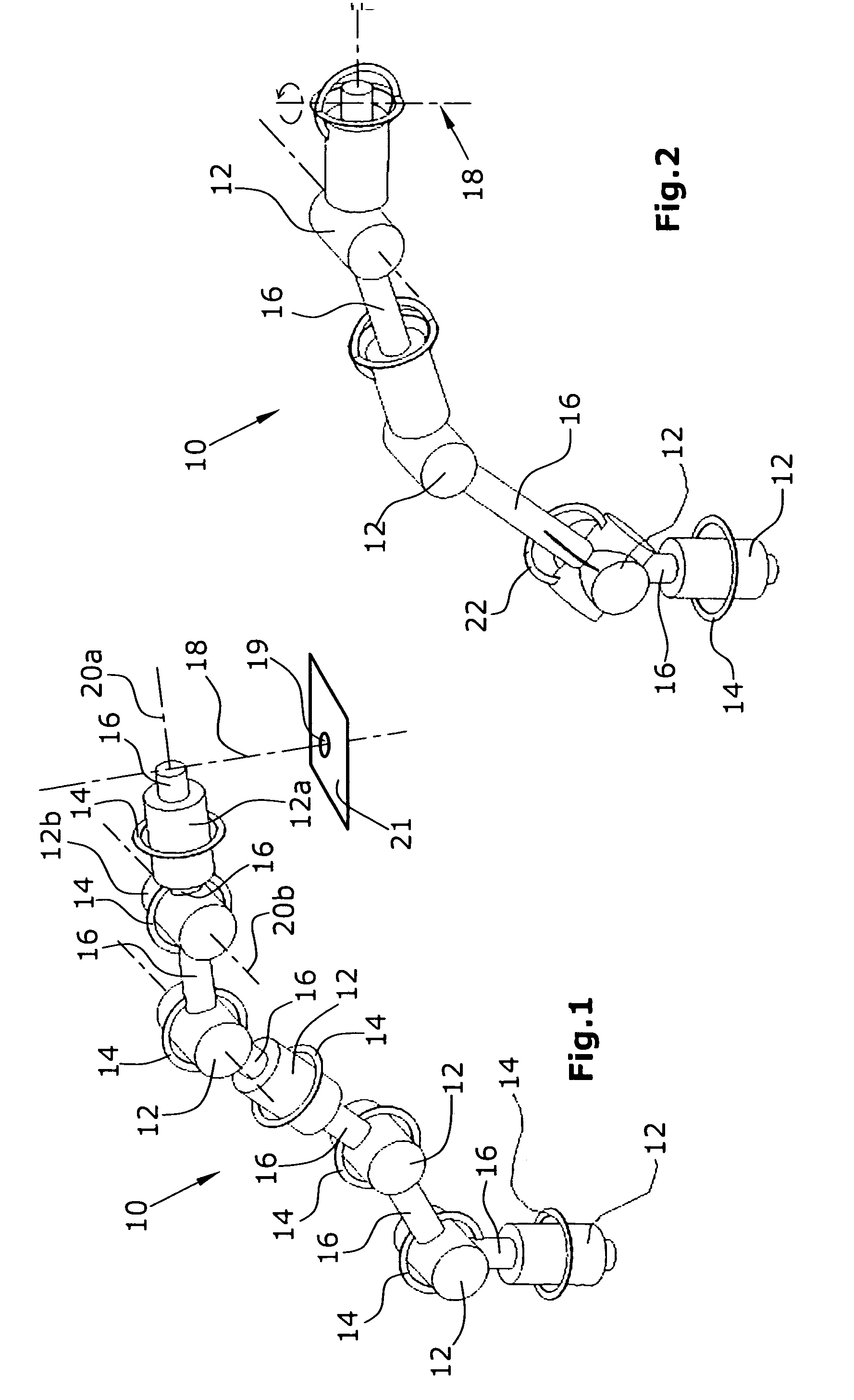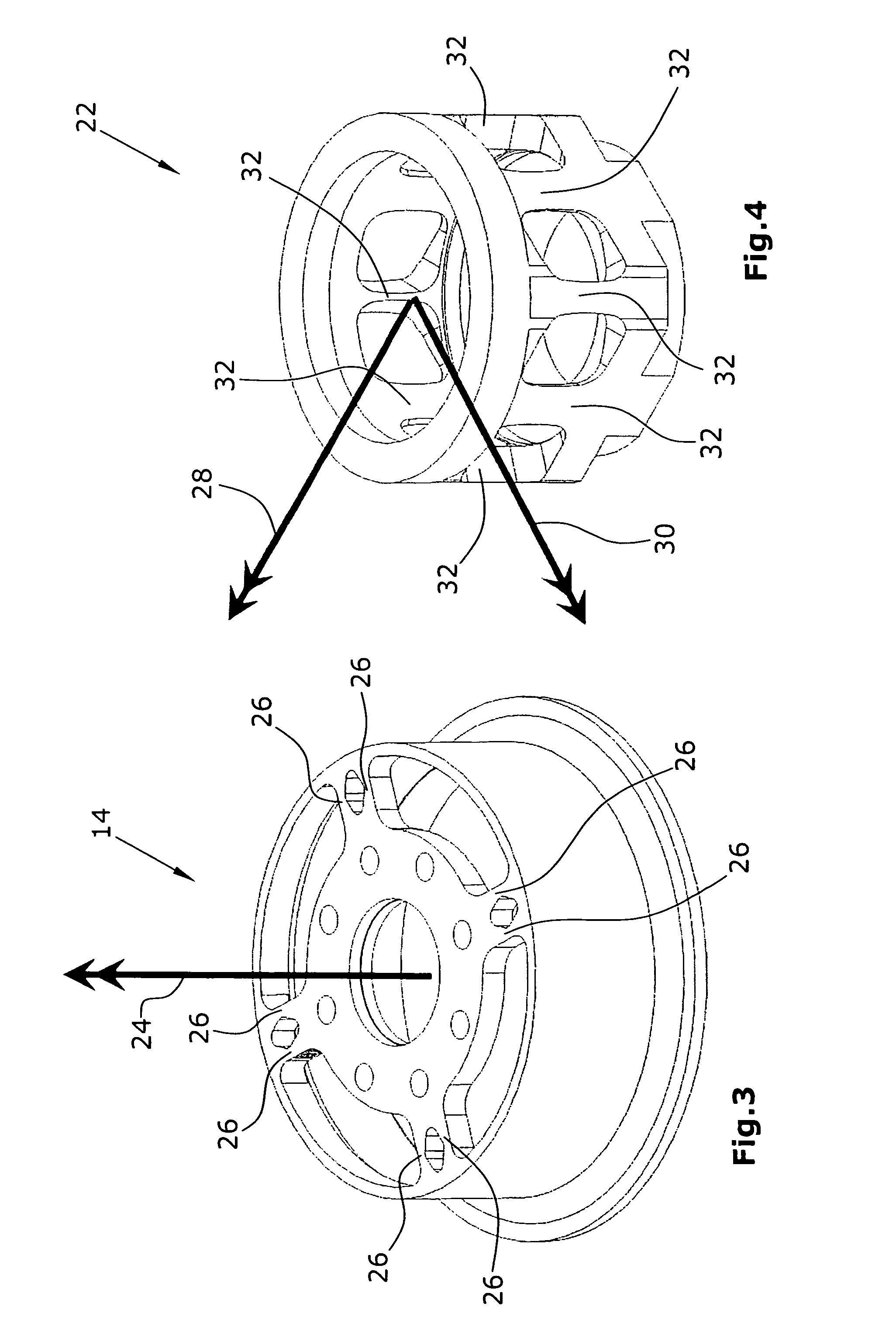Method for controlling a robot arm, and robot for implementing the method
a robot arm and robot arm technology, applied in the direction of electrical programme control, program control, instruments, etc., can solve the problems of high probability of collision in the use of medical robots, inability to perform preoperative planning sufficiently detailed and flexible corresponding to actual events, and inability to predict the environment. the effect of collision risk and/or the effect of force acting
- Summary
- Abstract
- Description
- Claims
- Application Information
AI Technical Summary
Benefits of technology
Problems solved by technology
Method used
Image
Examples
first embodiment
[0035]FIG. 1 is a schematic general illustration of a robot arm according to a robot arm,
second embodiment
[0036]FIG. 2 is a schematic general illustration of a robot arm according to a robot arm,
[0037]FIG. 3 is a schematic perspective view of a single axis torque sensor adapted to be used in a robot arm illustrated in FIG. 1,
[0038]FIG. 4 is a schematic perspective view of a multi-axis torque sensor adapted for use in a robot arm illustrated in FIG. 2, and
[0039]FIGS. 5-7 show examples of flow charts for zero moment controls according to the invention, based on impedance control, admittance control and impedance projection.
PUM
 Login to View More
Login to View More Abstract
Description
Claims
Application Information
 Login to View More
Login to View More - R&D
- Intellectual Property
- Life Sciences
- Materials
- Tech Scout
- Unparalleled Data Quality
- Higher Quality Content
- 60% Fewer Hallucinations
Browse by: Latest US Patents, China's latest patents, Technical Efficacy Thesaurus, Application Domain, Technology Topic, Popular Technical Reports.
© 2025 PatSnap. All rights reserved.Legal|Privacy policy|Modern Slavery Act Transparency Statement|Sitemap|About US| Contact US: help@patsnap.com



